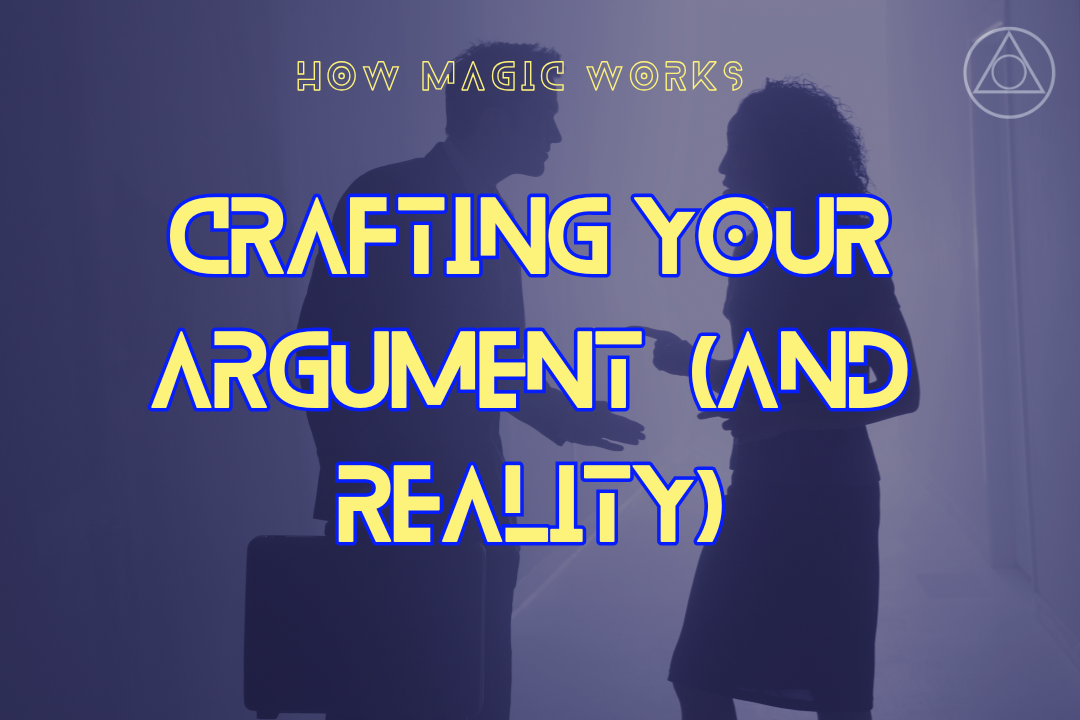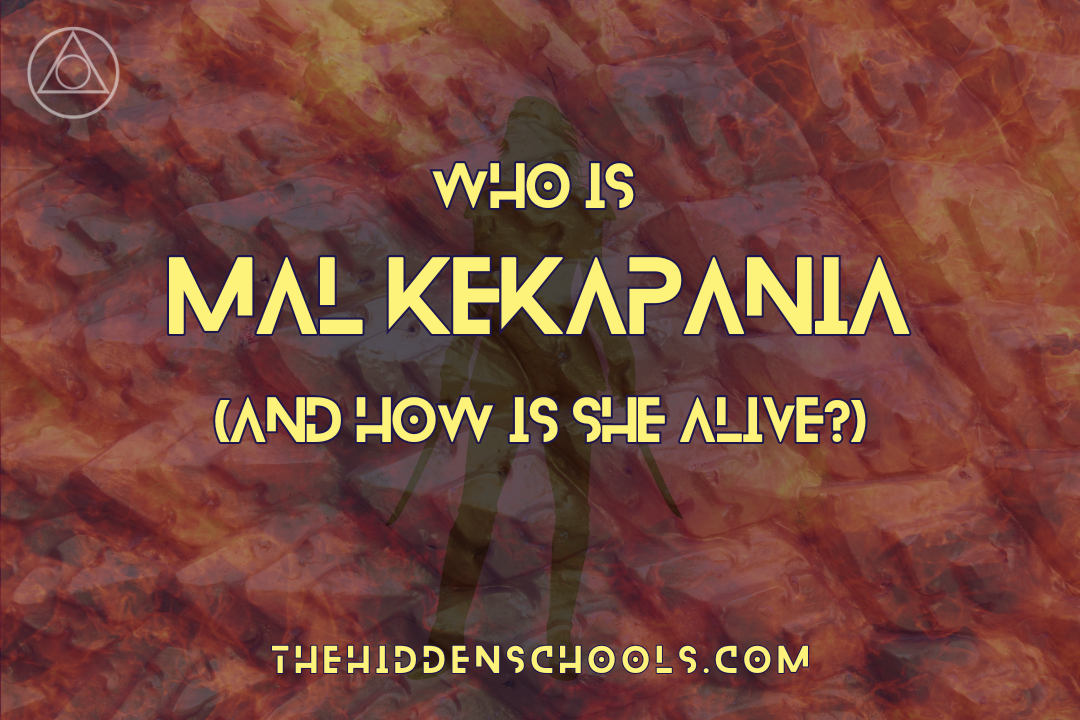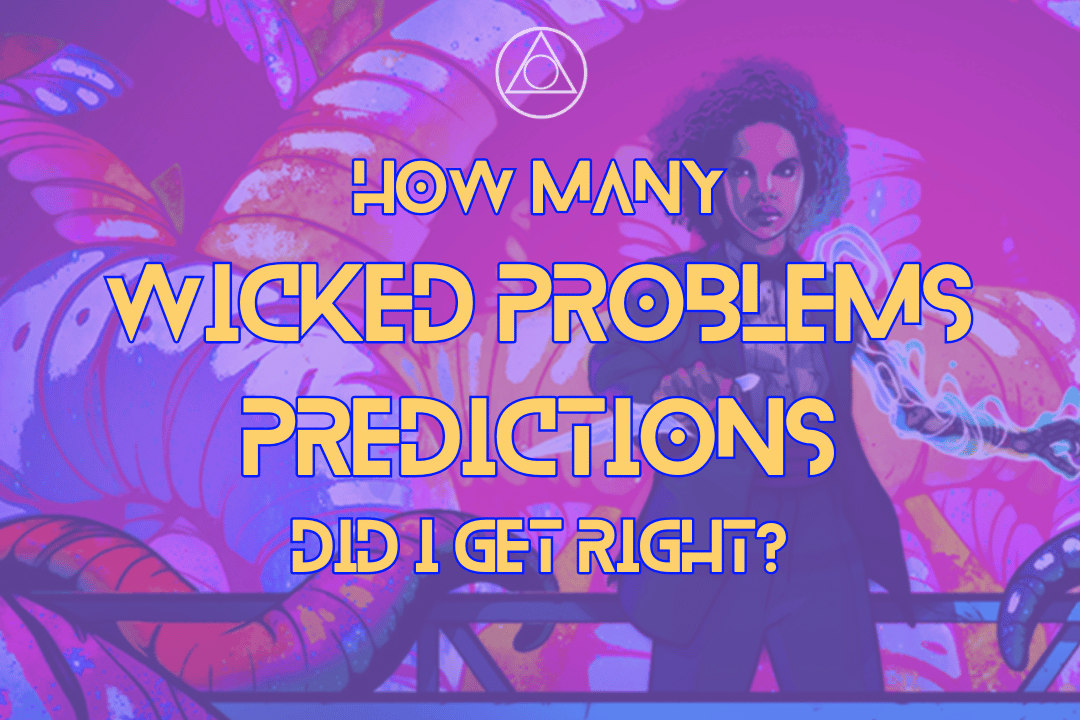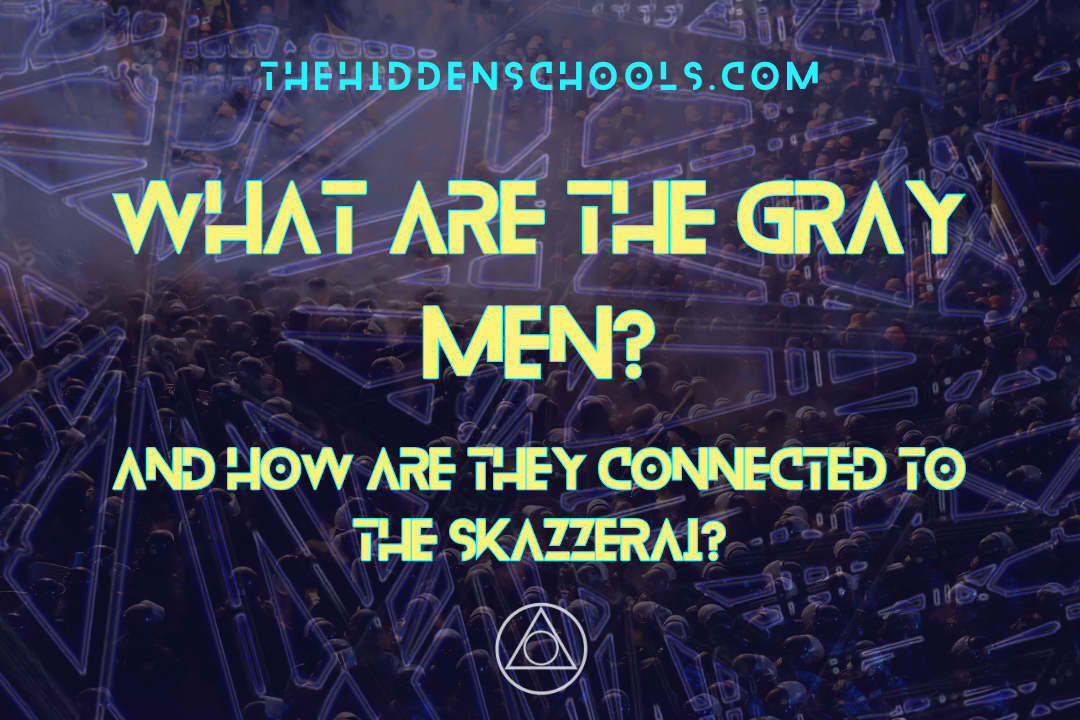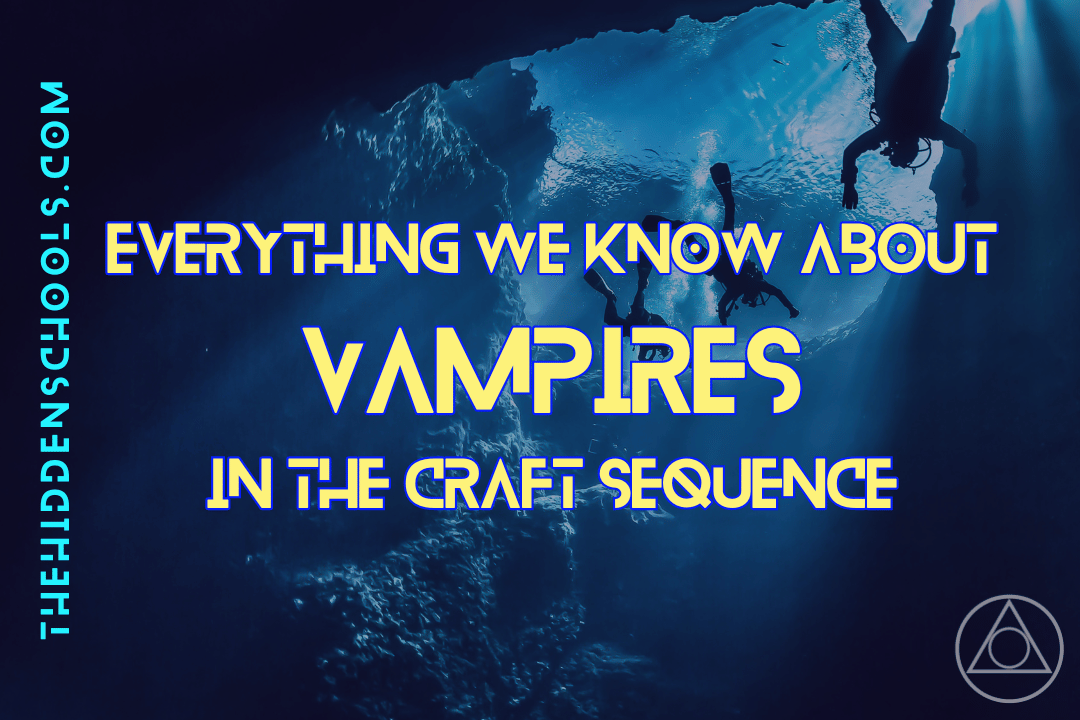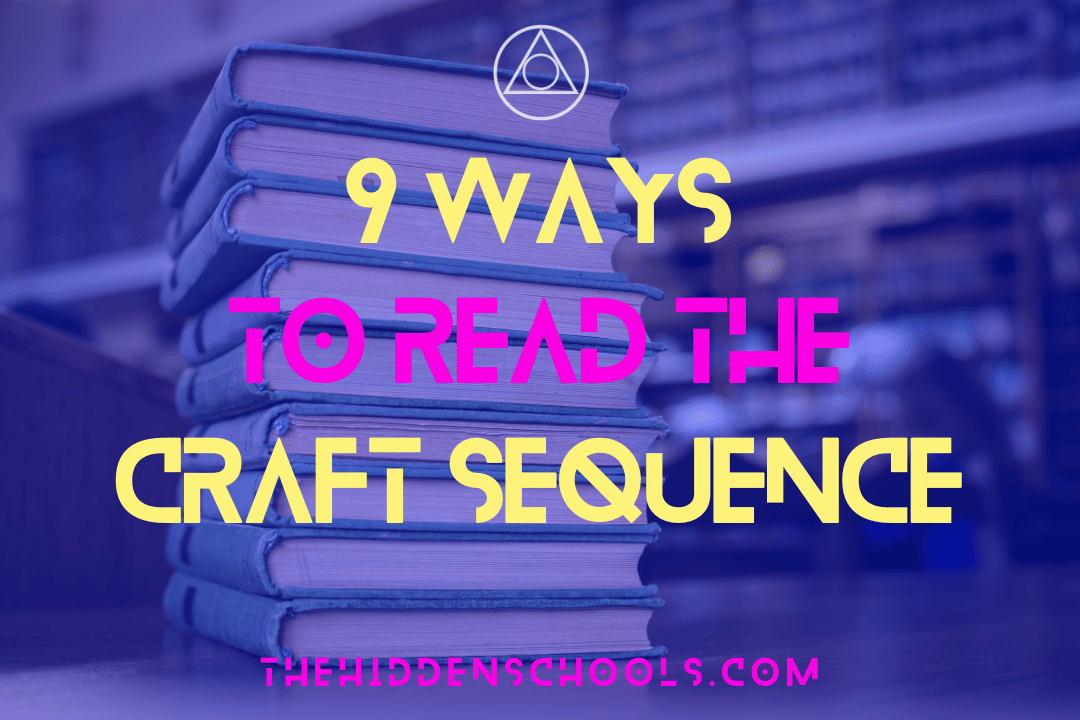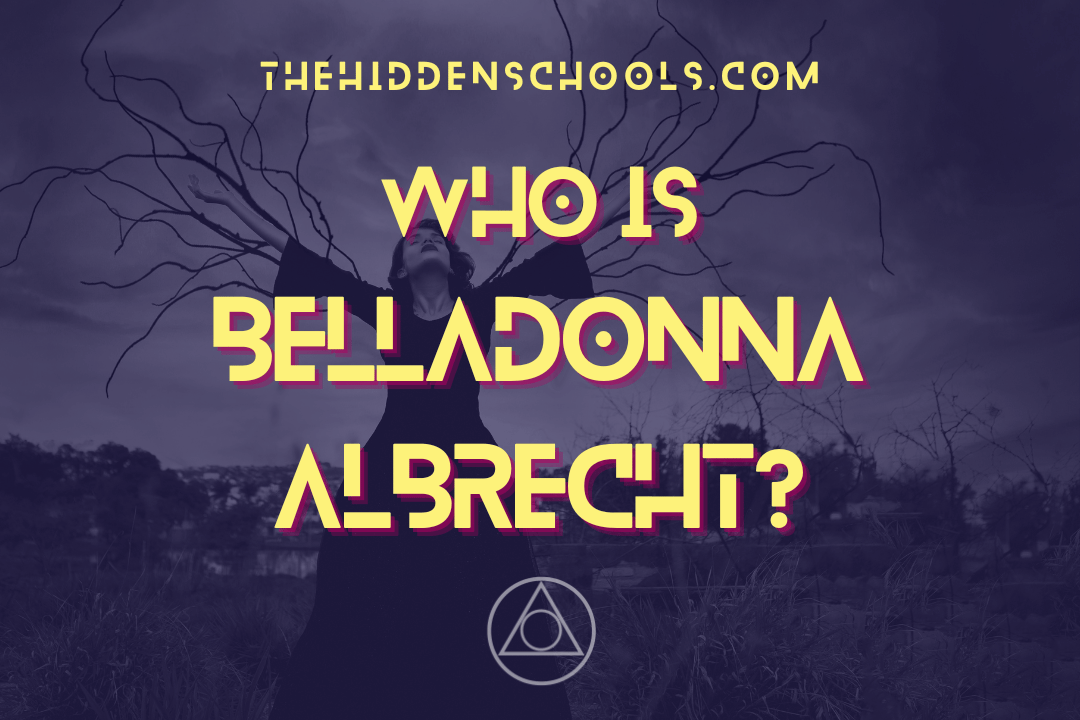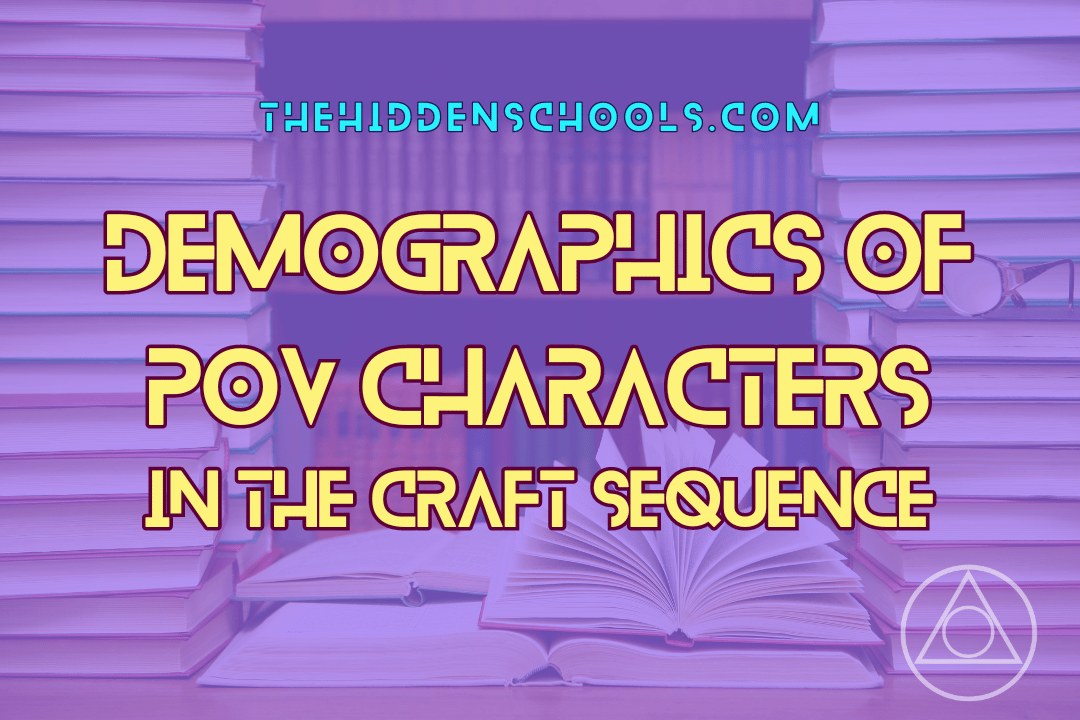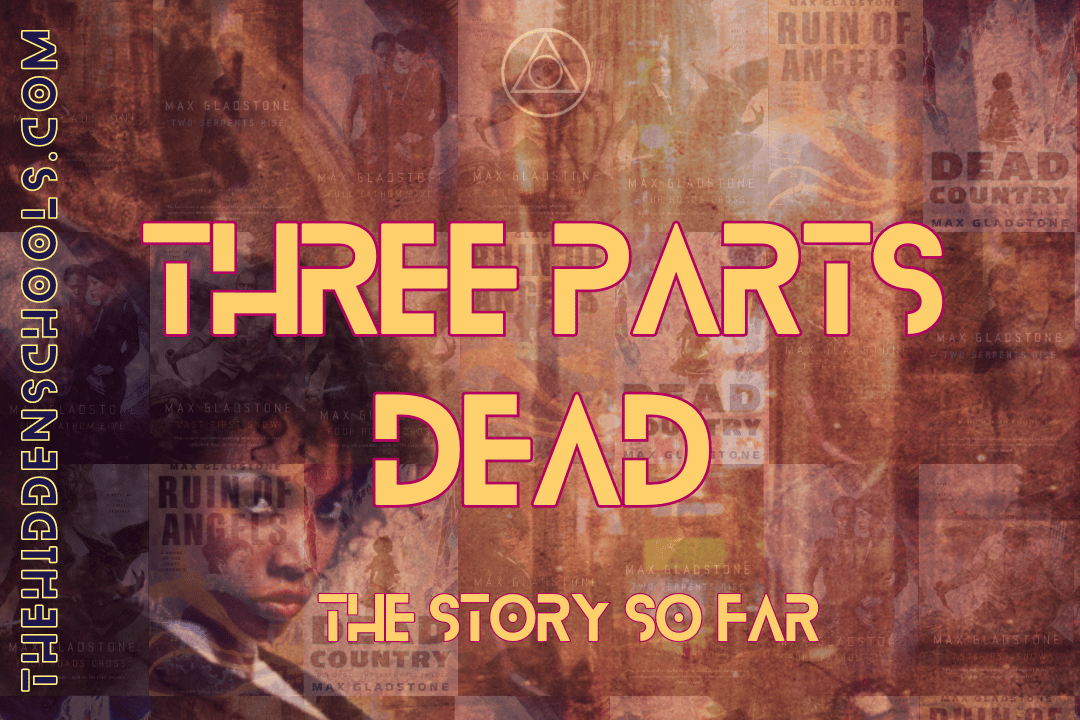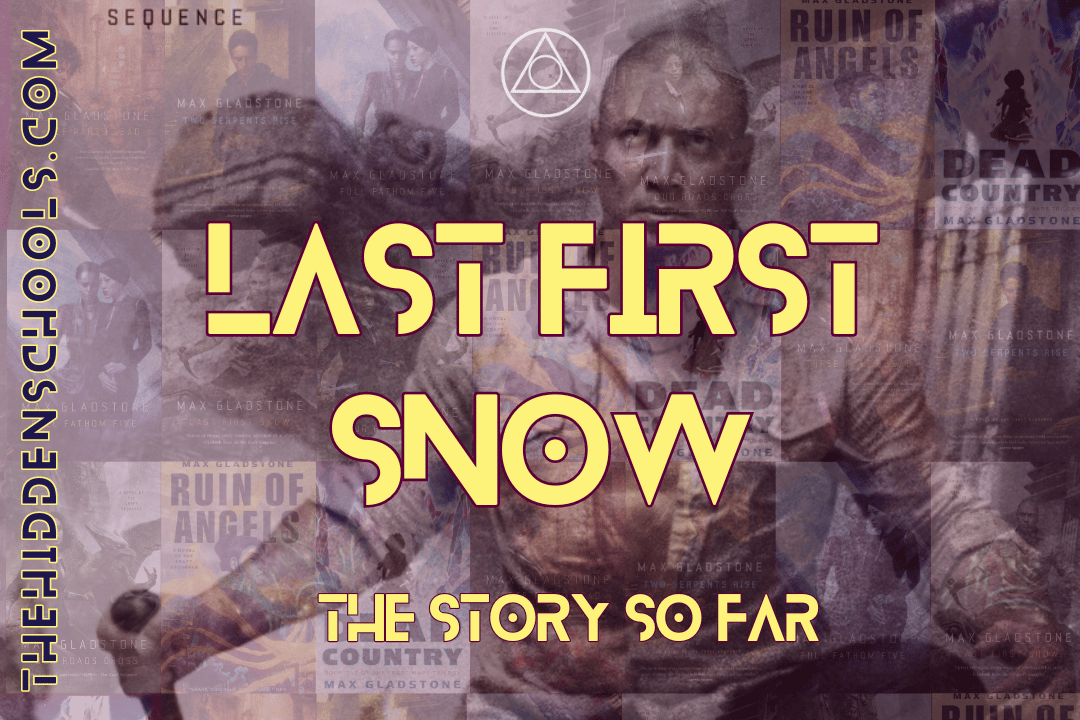Crafting your argument (and reality) | How Magic Works in the Craft Sequence
Craftsfolk are necromancer-lawyers, and as such a significant part of how they perform magic is via a strong argument, and asserting their truth onto reality. This essay looks at the magical components of a Craft argument: the battery that powers it, the glyphs that channel it, and the structure of the argument itself.
This essay wouldn’t exist without my ridiculously amazing friend Sash, who listened to me spiral about this series and narrowed in to these three points. You remain the best ever.
Note: this article contains major spoilers for all books, and assumes a basic understanding of plot and worldbuilding in the Craft Sequence.
Starlight and soulstuff: the battery for magic
“The Craft, young Abelard, is the art and science of using power as the gods do. But gods and men are different. Gods draw power from worship and sacrifice, and are shaped by that worship, that sacrifice. Craftsmen draw power from the stars and the earth, and are shaped by them in turn. We can also use human soulstuff for our ends, of course, but the stars are more reliable than men.”
Although magic-users in the Craft Sequence clearly require an innate ability to access magic, they also need something to power their magic (whether Craft or Applied Theology). Gods, it is said above, require worship and sacrifice - and what is, typically, sacrificed is soulstuff. That’s how soulstuff became currency in the modern era; even those without access to magic impart their soulstuff as payment for goods and services, or as a sacrifice or tax to gods that run their city.
Craftsfolk can use their own soulstuff, or the soulstuff of others, to perform the Craft if needed. We see multiple characters over the series pass out and nearly die from having used up nearly all their own soul to perform magic, and we see Tara in particular ‘borrow’ other people’s souls when needed - I’m thinking of Connor in Dead Country when Tara is operating on Dawn, and Kai offering her soul at a great interest rate in Wicked Problems.
It is the use of starlight, however, that both sets Craftsfolk apart from Applied Theologians and allows them to perform greater works of magic without sucking up soulstuff from those around them.
In Three Parts Dead, Tara and Elayne are weakened by clouds over the city; in Dresediel Lex, Caleb tells us that Craftsfolk keep the sky over the main business district unnaturally clear of clouds in order to be able to access starlight every night. In Dead Country, Tara rescues Dawn in daylight and is unable to even try to heal her until night falls. Tara explains the uses of soulstuff and starlight to her wary student:
“A shadow unfolded over the sky as Tara gathered starlight to her parched soul. She drew as much as she could hold, and when she stopped, the light slunk back.
“We drink starlight to work the Craft.”
“I thought it came from death. Each time I ... did what I did ... something died. Flowers sometimes. Sometimes the soil. The goat.”
“We use souls to power the Craft. Others’ souls, often, but we can use our own too.” How to explain a soul? People traded pieces of their souls all the time, to pay for cabs and meals and rent, but they so rarely thought about what it was they traded. “Souls are patterns. Of thought, of matter, of energy. Patterns on chaos. A blade of grass has a soul—the pattern-work of its life. Sentient creatures, things like us that think about the world, we create more complicated patterns. The stars are just scattered points, but we see shapes between them. When we look at them intently, we gather their light to us.” She wasn’t doing this right. Everything was all out of order. “You can take soulstuff from other people if they let you, or if you’re strong. You can pull it out of plants, animals, even base matter. But the stars are always there. When you call on them, the darkness comes.”
In essence, stars are simply your normal soulstuff, magnified. When you use the souls of living thing around you, you kill them. Craft can poison the ground, cause or exacerbate the Domain’s version of climate change. But the stars are always there, and can be used.
I do have a question about whether Craftsfolk using starlight is killing stars or other living things across space, but that’s not super relevant right now.
What matters is that starlight and soulstuff are batteries for the Craft. If you use the battery without training, you cause unintentional destruction - like Dawn says. She was untrained, and when she “did what she did” she sucked up soulstuff without guardrails, and destroyed flowers, soil, animals, and later people. Yet if you don’t have the battery, it doesn’t matter how skilled or educated you are, the precedence you’re working on or the strength of your argument, it’s useless.
Glyphs and scars: channelling magic
“Tara’s forearm had been brown and unmarked when she pulled up her sleeve, but as shadows deepened and the world went gray, traces of silver light appeared on her skin.
Her glyphs resembled spiderwebs laid by machine. Precise lines wove around her arm, spirals devouring spirals, hermetic diagrams inscribed with the script of half a dozen languages, most of them dead. A repeated symbol interrupted this pattern along the course of her radial artery: circle, nestled within triangle, within circle, the mark of the Hidden Schools. The glyphs’ light was strong enough to cast shadows.”
All Craftsfolk are heavily glyphed. Their bodies - and their bones - are covered in glyphs that allow them shortcuts in their magic. Before the quote above, we had already seen Tara’s glyphs. We read that “the glyphs tattooed on her arms and between her breasts proved she had studied there”, that she is protected from the Raiders’ curse by the “wards glyphed into her skin” and that she “drew the bent, sharp moonbeam that was her work knife from its place of concealment within the glyph over her heart.”
Yet it isn’t until later in the series that we learn more about how the glyphs actually work.
“She lit the glyphs in her arm, let shadow flow from them.
“It’s like referencing a point you’ve made before, rather than making the point again. Faster. More efficient. Once you’ve been glyphed, I mean. It hurts a lot, even before they work the silver in. Glyphwork relied on Craftwork precedent, so it obeys the same principles.”
...
Tara showed her the core glyphs concerned with each skill. “Remember, they’re just shorthand,” she reminded Dawn as the girl traced the glowing lines and nested geometric shapes on her arm. “They reference long-form agreements on file in the Argent Library at the Hidden Schools, and in the Courts of Craft. Some people rush to glyph themselves and forget the underlying architecture. If you don’t know the fundamentals, you’ll end up arguing against yourself.”
Glyphs themselves don’t hold magic. Rather, they are a shortcut to access magic. We talked before about words and belief creating reality: the Domain runs on contracts that essentially codify belief into written form, creating magic. If Tara wants to heat up her coffee with Craft, she doesn’t need to actively convince the world around her that the liquid in her mug should become hot. Instead, she activates a glyph that represents longstanding precedence about how the liquid can and will heat.
Craftsfolk don’t just use glyphs and symbols on their own bodies. In Last First Snow Elayne carves out a space in Chakal Square in which a negotiating committee can meet and be protected.
“She carved a circle into the flagstones, sixty feet across with a few inches’ gap in its circumference. Outline established, she inscribed the ward’s terms in unborn script.
“Explain.”
She pointed with her knife. “That language describes the space where we’ll meet.”
“We agreed to meet here. What remains to define?”
“Where ‘here’ is, for starters. Ten seconds ago these few yards were several hundred miles back on our planet’s orbit. The Craft only knows what I tell it. That’s why we use circles. Geometry’s a dependable. Most of the time, a point is either inside a sphere defined by a given great circle, or outside.”
“Why do some symbols fade?”
“They stay where I carved them. But I’m not always carving into rock.”
“Into what, then?”
“Notional space, where the ward lives. We don’t compose a new ward every time we need one–it’s easier to se pre-existing forms. Those lines connect this circle to a ward we Crafted decades back, which will remove us–” she winced as she sliced a vicious wound in the fabric of reality–”from the Square.”
The 150 or so years since Gerhardt’s first forays into the Craft have been spent creating and formalising great works of Craft that can be handily accessed by carving a symbol or lighting up a glyph.
Like much of Craft, it has its origins in Applied Theology. Glyphs are predominantly used by Craftsfolk, but many religions have their own versions. We don’t see any form of glyphwork in the churches of Kos or Seril, but Eagle Knights of the Quechal religion are heavily scarred with an equivalent. Rather than geometric glyphs representing contracts and ideas, Eagle Knights like Temoc (and, reluctantly, Caleb) have depictions of gods carved into their skin, giving them direct access to divine power.
“Caleb belonged to the line. Belonged to the scars his family had worn since before the Quechal homeland sank beneath the sea. As Temoc drew the scar, he feared the gods had deserted him. That, sleeping, they might not imbue the scars with power. But the wound his knife left blazed green, and knit itself closed.
God after god, each presented as a burning curve through his son’s skin. Caleb knew the stories. As Temoc cut, they became part of him. No fine manipulations of the chisel here, no elegant glyphs: he carved gods and their prayers in elemental forms onto his son, into the boy’s soul.”
These scars give Caleb access to both power of the gods and the Craft, despite his own lack of training. The scars channel the magic, allowing Caleb himself to be a conduit.
Although we don’t see them in quite so much detail, we also see that Gal, a Knight of Camlaan, has similar magical markings:
“Her hand drifted to her heart, and tattoos there glowed with golden light.
...
Light burned down Gal’s spine, tracing the tree roots of her nerves. A golden glow spread from them, from her heart, to her hands. One step, and she might have been a trick of candleflame and mirrors. Two steps and her arms were clad in a solid light. Three steps, and she was a halo.”
Gal and Temoc play similar roles for their respective religions: they are knights, fighting with their gods’ grace, powered up by traditional markings that allow them to channel that magic. Kos and Seril, as far as we have seen so far, do not have such knights. Seril’s gargoyles are the closest she has, but they're not quite the same thing. It makes sense, then, that we haven’t seen similar kinds of glyphwork there.
So, that’s two pieces of the puzzle: a battery to power the magic, and glyphs or symbols to channel it. It is the third element, however, that really distinguishes magic in the Craft Sequence.
Asserting your truth through argument
“The Craft was an experiment in justice. What if there were rules prior to gods, rules even gods had to follow? What if we tried to have faith in those rules, rather than in the local cloud spirit? Maestre Gerhardt and his fellow scholars went looking, and found those laws. Or perhaps they made them, wrote them so deeply into the world that even gods were bound. Every argument in every Court and Library, every claim of property by right rather than force, every piece of soulstuff exchanged on the planet, it all gives strength to the Craft.”
We looked at how Craft battles work through clashing visions of reality in the last essay in this series. A strong argument is intrinsically linked to to these visions of reality and belief.
Let’s look at some of the key components of a strong Craft argument.
A Craft argument requires thorough knowledge of the subject matter. Whether one is protecting ones own body against an attack, calling on an insurance contract to protect a building, or battling over a god’s body, one must define all constituent parts and claim them as a whole. This definition is supported by pre-existing agreements, written documentation, glyphs and symbols, but the written documentation is useless unless it is thorough.
There are many examples of how this works throughout the series - I’m particularly thinking of Elayne protecting Chakal Square, and the Craft battles in Four Roads Cross over Seril’s return - but for the sake of a consistent narrative, I’m looking here only at Dead Country.
We start with Tara defending Edgemont from the Raiders (having previously fought Raiders in the book, and mostly beaten them - but ending up with a small bit of the Raider curse in her arm. This is important). She has spent quite some time learning every part of the town, hearing its stories and its secrets, identifying every small part of it. During the battle, she uses this work as her Craft argument:
“Her argument was simple. She had named Edgemont with the Craft, named its every field and boundary and resident, each cow and horse and goat, she had named its birds and their nests. The Raiders were not welcome. They did not belong. They had no claim to this land, and no power here. Let them draw back to the desert and lick their wounds. This place was not theirs. She framed her argument in glyphs and alien tongues, with gestures and flame and triplicate paperwork, and the Craft made it so.”
Against a weak opponent, this argument would suffice. We saw earlier in the book, when Tara was teaching Dawn, that it was near impossible for Dawn to land a hit because Tara defined her own space and asserted her right over it. Defending Edgemont is a more complex version of this basic idea.
However, against a strong and/or trained opponent, their counterargument slams into yours and eats away at it. And discrepancies in your argument will be exploited, its weaknesses eaten away until your opponent (and their argument) triumphs.
“Guards fell, and fell back. The lines wavered.
The Seer’s counterargument hit her then, like a blade between the ribs. You stake your claims with arms–a retreat is a surrender, a ceding of territory. What you lose belongs to me. The Pastor screamed
A gap opened in her defenses. The curse-lines shifted lightning-fast. Through the storm the Seer marched, a towering flame to Craftwork sight, though unseen yet to mortal gaze. Each footstep was an ice pick in her arm.
The guards began to retreat. No, she told them. Get closer.
…
She saw him with her eyes open and closed: the Seer. She felt him in her arm, in her blood. Where he set foot, curse-threads wormed to rot the soi. Guards fell back, and the rot spread.
The wards in Tara’s arm shivered and cracked.
…
Her Craft bore down with power he could not resist. I abjure you. But he had a hook inside her and worked his curse toward her heart.
I belong here, the curse whispered. You say I am not of Edgemont. But you are part of this place. You have made yourself its heart–the bond between Edgemont and the world of Craft. And I am part of you. If you are of Edgemont, then so am I.
The logic pressed against her Craft.”
Had Tara not been touched by the curse, her argument and her skill with the Craft likely would have won out here. But with the curse? Her argument was weakened. The Seer could claim to be part of Edgemont and win that way, or break Tara’s logic and her Craft and win through that.
Tara has to adapt her argument and refute the Seer’s claim that she is of Edgemont. This is thematically important to the book, and Tara feels a part of herself die as she makes the claim, but crucially for our purposes here we learn “The Craft would not bind in falsehood.” Your argument must be founded in truth - with the caveat that truth is a slippery beast, and looks different to different people. But in this case, if Tara had fully believed herself to be of Edgemont, she could not have pivoted to this argument, and thus the Craft wouldn’t work. Craft requires the Craftsperson to truly believe their argument.
We see Tara briefly try to hold two beliefs at once later in the book when she breaks into the Tellurian Annex.
“The curse was a hungry little argument: trying to persuade Tara’s flesh that it was a part of the curse, not of her. She had countered it by taking a detailed inventory of her anatomy, and by sheer will. But still the curse chattered inside, staking its claim. I am in you. You are part of me. You are part of us. With her fine incision, she accepted the argument–within bounds. The curse claimed she was part of it. If so, she belonged here. She belonged to this place. Just a Raider, coming home, with a prisoner.
She felt her wards weaken, as the infection pressed its advantage. If she was using the curse’s argument as a basis for her own, then that meant she thought its argument had merit. She couldn’t hold it like this for long, arguing both sides of the line.”
Belief creates reality. We’ve come back to this point many times in the series thus far - and in other articles, too. Here we see its natural conclusion in the Craft: if you accept an opponent’s argument, your own argument starts to crumble. But if your argument is strong enough, backed up with enough power and the right glyphs, you can hold it for a little while.
I wonder if we’ll see a bit more of this in the future through Kai Pohala. She has demonstrated countless times that she can hold multiple ideas and beliefs as true; it’s integral to her job as a creator and worshipper of Kavekanese idols. How will she manipulate this ability in the Craft wars to come?
In conclusion
So there we have it. Battery plus channel plus argument = the Craft. As Tara says in Three Parts Dead, the Craft is half art, half science, and an extra half bull-headed determination. You certainly need the determination to painfully glyph your entire body, and force your argument onto reality. Rather them than me.
And to end this essay, here’s a quote I couldn’t work into the article but love:
“Glyph-lines woke on her skin and whispered moonlit arguments. Old deals the first Craftsmen struck with the sky arrested her fall.”
There’s something wistful and particularly magical about that phrasing, don’t you think?
What do you think? Let me know - and don’t forget you can subscribe to be the first to hear about new articles and fun projects in the pipeline. Like what we do here? Tips welcome on ko-fi to help pay for the site!
I’m not going to make any promises about future instalments, as this one has taken literal years to produce. But I have many ideas, so let’s see if I can get a few out in 2025…

